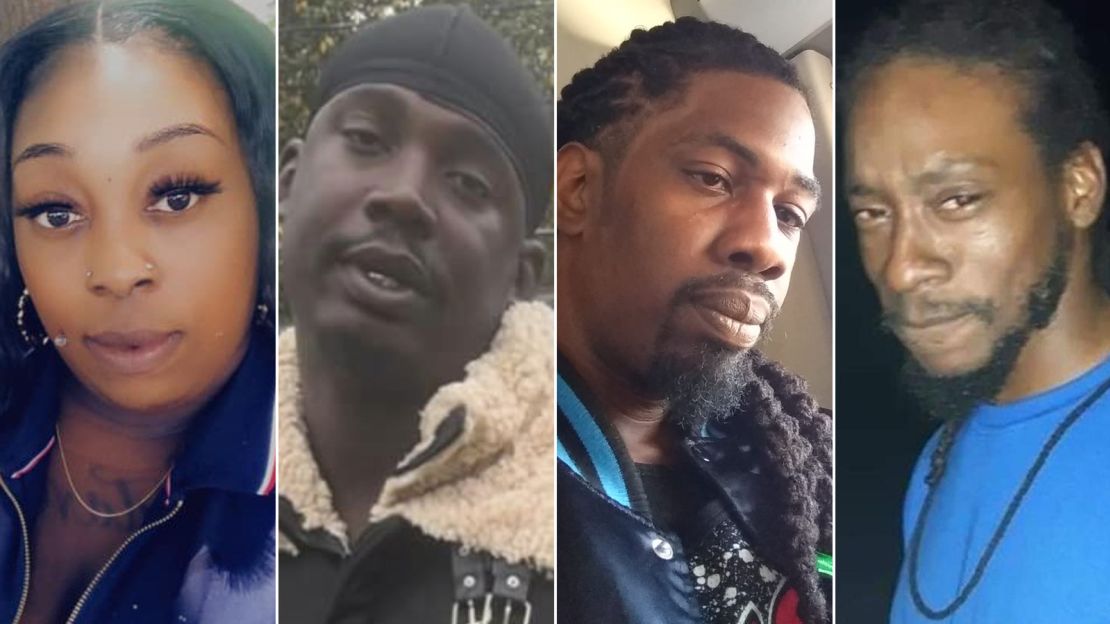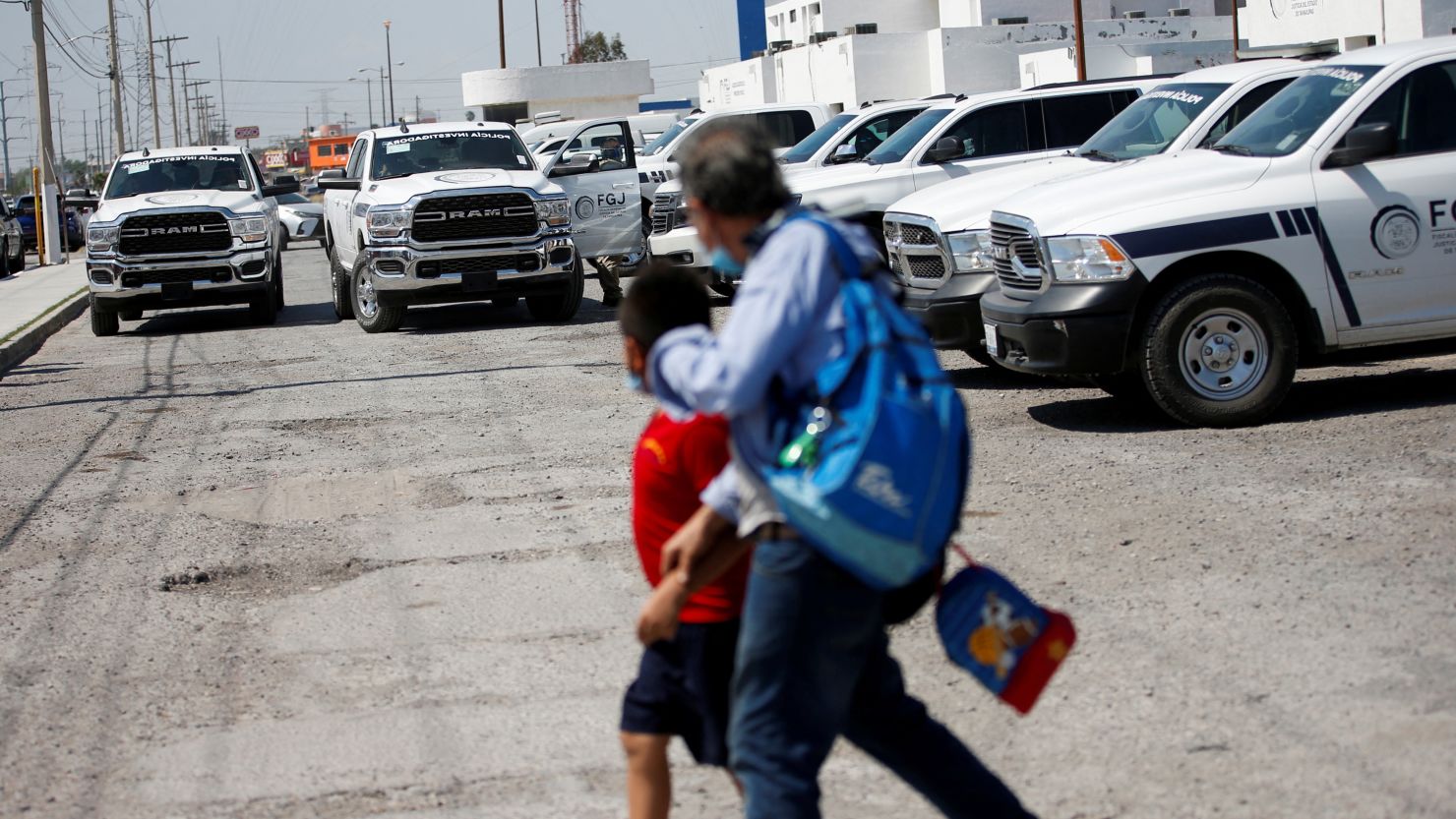As the American survivors of last week’s bloody kidnapping in Matamoros receive medical treatment, and the bodies of those killed are repatriated, Mexico’s broader epidemic of disappearances remains largely unsolved: More than 100,000 Mexicans and migrants have disappeared, with no explanation of their fate for families.
The Mexican defense ministry said Thursday that hundreds of security forces were heading to the border city to bolster the defense of the area in a bid to safeguard “the well-being of citizens” But the swift response by authorities to the Americans’ kidnapping has raised eyebrows among Mexicans.
“In Mexico the lives of foreigners are worth more than the Mexicans themselves,” one person wrote on social media on Tuesday.
Another hoped “the US government will help all the relatives of the disappeared in Mexico so that the government of #AMLO (President Andrés Manuel López Obrador) finds them as quickly as the citizens of #USA,” in a Twitter post on Wednesday.
“Families of the disappeared (can only) hope to have such a prompt response from Mexican officials to their reports of loved ones that go missing,” Maureen Meyer, vice president for programs at the Washington Office for Latin America (WOLA), told CNN.
Mexican authorities have been accused of being slow to find disappearance victims. The reluctance has been attributed to a lack of capacity amid high numbers of cases, official collusion with criminal groups or “a tendency to blame the victims… suggesting that they must have been linked to some illicit activity,” Meyer, who is a human rights expert on Mexico, added.
The government’s attempt to address organized crime can also lead to disappearances, she added.

Last year, a Mexican government report blamed the country’s own military and police for the disappearance of 43 students in 2014.
While traveling through the southwestern city of Iguala, the students were intercepted by local police and federal military forces. Exactly what happened after remains unknown, since most of the missing students were never found. Survivors from the original group of 100 said their buses had been stopped by armed police officers and soldiers who suddenly opened fire.
There has also been a forensic crisis in the country, with more 52,000 unidentified bodies in government custody, said Meyer, a backlog that needs cooperation from prosecutors’ offices.
Some families have taken matters into their own hands. Many have resorted to form dozens of “search collectives” to investigate disappearances on their own.
Some 40,000 relatives of people who have gone missing in Mexico over the years have taken part in training sessions in the search for their loved ones, said the International Committee of the Red Cross in a 2022 report.
Dangerous border
The kidnapped Americans were found in the state of Tamaulipas, home to a number of criminal gangs including the Northeast Cartel and the Gulf Cartel, who have been warring for control of the border crossings into the United States.
Gang violence has plagued Tamaulipas, with drugs, gun and migrant smuggling attributed by security experts to its rise in crime.
The Mexican Gulf region, which includes Tamaulipas, is the shortest route for migrants in search of a better life in the US.
But the journey is riddled with risks and the state has a reputation for being dangerous for migrants, who are frequently kidnapping victims, according to Meyer. The state has the third highest number of cases of disappeared people in the country, according to government figures.
In 2010, 72 migrants from Central and South America were massacred by a cartel in San Fernando, a few hours from Tamaulipas’ border. Several mass graves have also been found in the state over the years.
The migrants’ plight is further endangered by US immigration policies that require thousands to wait on the Mexican side of the border, say human rights experts.
There was at least one incident in the past of migrant men being kidnapped from a shelter in Matamoros, Meyer said.
The kidnapping of the US citizens – identified as Shaeed Woodard, Zindell Brown, Latavia Washington McGee and Eric Williams – adds political pressure on Mexico’s President López Obrador to make good on his administration’s promise to address the country’s disappeared.
Experts say there have been some efforts to identify missing people by his administration, but the number of the disappeared has continued to rise under López Obrador’s watch. Tens of thousands of people have gone missing each year since the start of his term at the end of 2018, according to government data.
The president has defended his record on helping the family of the disappeared, saying no other government has gone as far as his administration. “No government had worried about the missing like now,” he told a press conference last May.
“The entire Ministry of Interior is dedicated to that and looking for clandestine graves because it should not be forgotten that there was a war against drug trafficking in which many disappeared,” he said.
As a presidential candidate, López Obrador controversially vowed to fight Mexico’s epidemic of gun-related violence by focusing on social programs, with what he termed “hugs, not bullets” — suggesting a break from predecessors’ hard-line tactics. In office, the “hugs” rhetoric has been somewhat undercut by López Obrador’s rollout of a security strategy that does empower the military. Nevertheless, the homicide rate remains stubbornly high.
CNN’s Karol Suarez contributed to this report.





